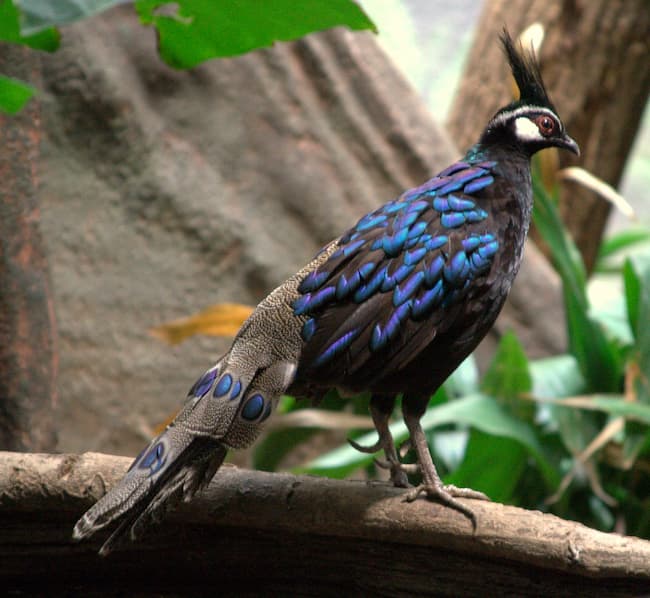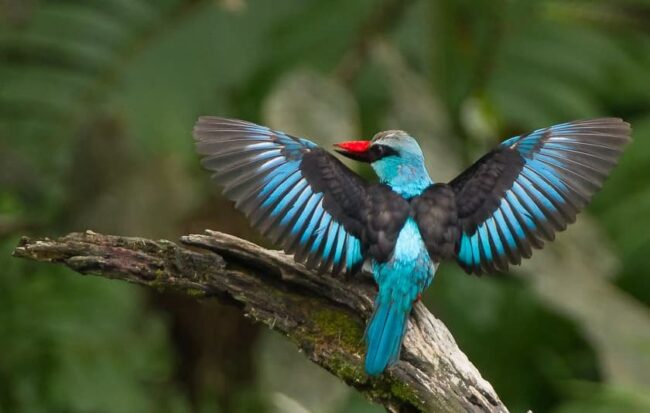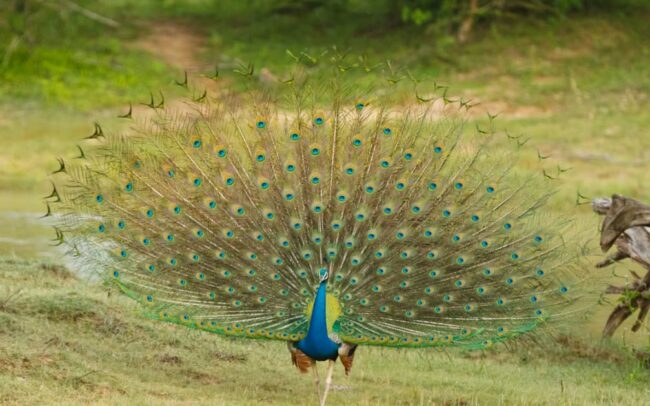The Palawan peacock-pheasant (Polyplectron napoleonis) is a stunning bird found in the forests of Palawan, Philippines. It is one of the most colorful pheasants in the world, with a bright blue-green plumage and a distinctive mohawk.

The Palawan peacock-pheasant is a large bird, with males measuring up to 60 centimeters in length and females up to 50 centimeters. The male has a bright blue-green plumage with a black head and neck. The mohawk is made up of long, iridescent blue-green feathers that rise up from the back of the head. The female is slightly smaller and has a more muted plumage, with brown and green feathers.
Palawan peacock-pheasants are shy and elusive birds, and they are rarely seen in the wild. They are found in forests at altitudes of up to 1,500 meters. They feed on fruits, seeds, and insects.
The Palawan peacock-pheasant is a vulnerable species, and its population is declining. The main threats to the species are habitat loss, hunting, and the illegal pet trade.
Habitat Loss

The Palawan peacock-pheasant is found in a small area of Palawan, and its habitat is being destroyed by deforestation. Forests are being cleared for agriculture, mining, and logging. This is reducing the amount of suitable habitat for the Palawan peacock-pheasant, and it is making it more difficult for the species to find food and mates.
Hunting
The Palawan peacock-pheasant is also hunted for its meat and feathers. The meat is considered to be a delicacy, and the feathers are used to make traditional garments. Hunting is a major threat to the species, and it is estimated that thousands of Palawan peacock-pheasants are killed each year.
Illegal Pet Trade
The Palawan peacock-pheasant is also a popular target for the illegal pet trade. The birds are captured from the wild and sold to collectors. The illegal pet trade is a major threat to the species, and it is estimated that hundreds of Palawan peacock-pheasants are captured each year.
What Can Be Done to Save the Palawan Peacock-Pheasant?
There are a number of things that can be done to save the Palawan peacock-pheasant. One is to protect its habitat. This can be done by creating and enforcing protected areas. Another is to reduce hunting. This can be done by educating people about the importance of the Palawan peacock-pheasant and by enforcing laws against hunting.
Finally, it is important to raise awareness about the plight of the Palawan peacock-pheasant. This can be done through education and outreach programs. By working together, we can help to save this rare and beautiful bird.

Frequently Asked Questions
- Where can I see Palawan peacock-pheasants in the wild?
The Palawan peacock-pheasant is only found in a small area of Palawan, Philippines. The best place to see them is in the Palawan National Park.
- What are the threats to Palawan peacock-pheasants?
The main threats to Palawan peacock-pheasants are habitat loss, hunting, and the illegal pet trade. Habitat loss is a problem because it reduces the amount of suitable habitat for Palawan peacock-pheasants to live in. Hunting is a problem because it can reduce the population of Palawan peacock-pheasants. The illegal pet trade is a problem because Palawan peacock-pheasants are often captured and sold as pets.
- What can I do to help save Palawan peacock-pheasants?
There are a number of things you can do to help save Palawan peacock-pheasants. You can support conservation organizations that are working to protect Palawan peacock-pheasants. You can also avoid hunting Palawan peacock-pheasants and choose to buy products that are not made from Palawan peacock-pheasants. You can also educate others about the plight of the Palawan peacock-pheasant and encourage them to get involved in conservation efforts.
- What is the future of the Palawan peacock-pheasant?
The future of the Palawan peacock-pheasant is uncertain. The population of Palawan peacock-pheasants is declining, and they are facing a number of threats. However, if we work together to protect their habitat and reduce hunting, we can give them a chance to survive.
I hope you enjoyed this article about the Palawan

